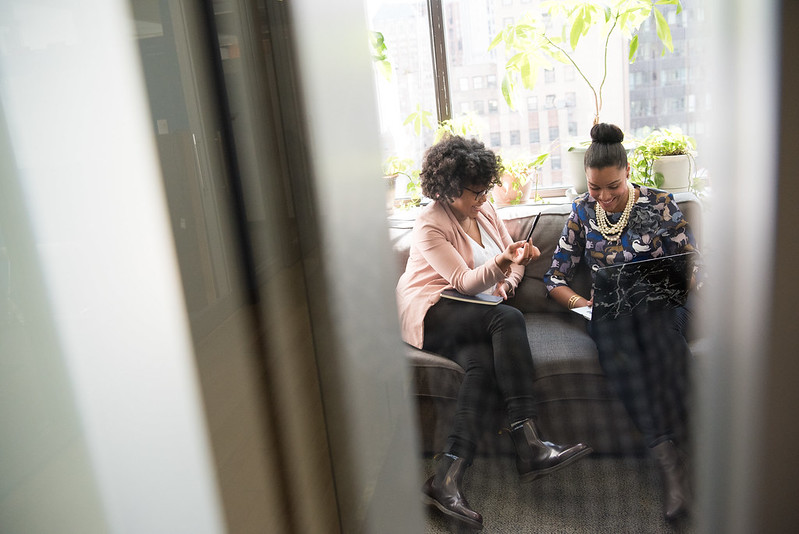Blog
Recording and documenting oral histories

An oral history is a spoken or documented record of someone’s memories of their own life experiences. Oral histories are handed down from generation to generation, or stories of someone’s own life. Oral histories can be recorded into digital audio files then produced as transcripts of the person’s statements. These transcripts may also reflect the interviewee’s non-verbal expressions and body language. An oral history transcript should represent the interviewee’s telling of their story as exactly as possible.
While an oral history may be transcribed (typed) verbatim while the interviewee speaks without producing an audio recording of the interviewee’s story, this article is about the process of first producing an audio recording of an oral history, during an interview or consultation, then producing a verbatim transcript.
Recording an oral history
Different interviewers have different styles; there is no one correct way to record an interview of a person talking about their past experiences. Whether the interviewer speaks as little as possible, only speaking when necessary to prompt or ask question, or whether they become more involved in the discussion, depends on the people involved and how much interviewer input is needed.
The interviewer, or recorder of the oral history, usually limits their comments to:
- prior to recording, explaining the process and relaying other relevant information to the interviewed person, such as copyright of their story
- prompting the person to elaborate on a topic or encouraging them to continue telling their story
- comforting or showing sympathy or empathy or engaging with the person telling the story in other ways.*
* According to Oral Histories Australia (OHA), the interviewer should limit themselves to non-verbal cues and prompts wherever possible; that is, they should not speak any more than absolutely necessary during the interview.
Before recording an oral history, make sure you and the storyteller have agreed on who will own the copyright of the story, payment and other legal issues. For information and guidelines about this, go to OHA’s ethical practice in oral history – or, for First Nations peoples’ oral histories, Recording oral histories of family members.
When recording an oral history, it’s a good idea for the interviewer to jot down the interviewee’s non-verbal cues – shrugging, smiling, crying, or body language – along with whatever they were saying at that time. That way, after the audio recording has been transcribed, the interviewer will be able to insert those non-verbal cues into the transcript if they wish, to add to that person’s oral history.
For some tips on how to make sure interviewees’ comments are clearly audible see: Tips for recording interviews
Oral histories can be recorded or documented via telephone, an online platform (Zoom, Skype) or face to face. But bear in mind that a person – especially a person unused to online platforms or speaking via telephone – may not feel as comfortable using a remote method, as they would if they were to be interviewed face to face. As a result they may divulge less, or different, information via a remote method, than they would have if they had been interviewed face to face.
Note that audibility can be an issue when speaking and recording via telephone, so if you are conducting the interview via telephone, extra care must be taken to make sure the interviewee’s voice and comments are clear. Similarly, when recording interviews face to face, or via an online platform, make sure you can hear all of the interviewer’s comments and if they are speaking quietly, use tools such as reiteration, or note-taking, to ensure their stories are fully captured so you can produce an accurate transcript.
Producing a transcript of an oral history
To accurately transcribe a recording of a person’s oral story you need to be an accurate touch typist, have very good listening skills, and have access to suitable audio transcription equipment. For more information, see: How to produce perfect transcripts
To produce an accurate transcript, you need to first transcribe the recording into a first draft and then proofread that draft (whilst listening again to the audio file) to fill in gaps, correct misheard words and punctuate the transcript to make it as easy to read and understand as possible. You should include relevant information about the oral history on each transcript; e.g. the name of the interviewee, time and length of the recording and other details. For more information about the process of producing accurate transcripts see: 3 point plan for producing transcripts
While transcribing the oral history, the transcriptionist should where relevant/appropriate insert notes about the non-verbal actions (if those actions have sounds). I use italics for any of these “transcriptionist’s notes” and this method of indicating the non-verbal sounds in the recording is noted at the top of the transcript. These non-verbal action notes may include things such as “paper rustling”, “crying”, “sniffing”, “laughing”, “chuckling” etc.
Once an oral history has been transcribed and proofread and the transcript represents the interviewee’s statements exactly, the transcript is ready for the next stage – whether that be publishing or sharing the oral history transcript “as is”, or editing the oral history transcript for inclusion in a publication.
Helpful links
The above information is based on my own experiences recording, transcribing, editing and publishing oral histories. For more information go to:
- Protecting Indigenous knowledges through oral histories and culturally safe practices
- Editing oral histories
- Turning oral histories into self-published life stories
- Example of a self-published collection of oral histories: Buibere. Example of a self-published memoir based on an oral history: Hold your head up high
For articles about recording and producing transcripts in general, go to: Producing transcripts
Image: Thank you to WOCinTechChat for permission to use this image.
Back To Blog

